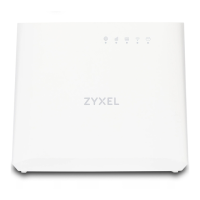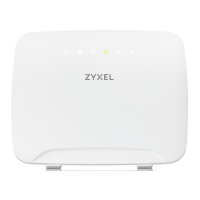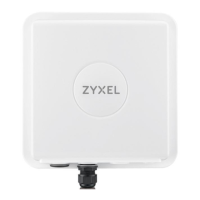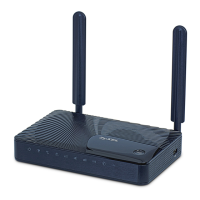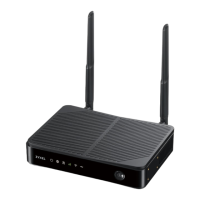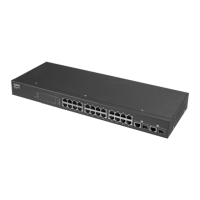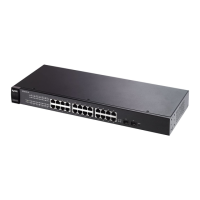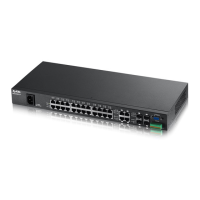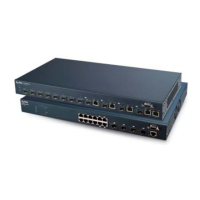Chapter 10 Network Address Translation (NAT)
LTE Series User’s Guide
173
The following table describes the fields in this screen.
10.7 Sessions
Use the Sessions screen to limit the number of concurrent NAT sessions each client can use. Click
Network Setting > NAT > Sessions to open the Sessions screen.
Figure 131 Network Setting > NAT > Sessions
Table 59 Network Setting > NAT > Address Mapping > Add New Rule
LABEL DESCRIPTION
Rule Name Type up to 20 alphanumeric characters for the name of this rule.
Type Choose the IP/port mapping type from one of the following.
One-to-One: This mode maps one local IP address to one global IP address. Note
that port numbers do not change for the One-to-One NAT mapping type.
Many-to-One: This mode maps multiple local IP addresses to one global IP address.
This is equivalent to SUA (i.e., PAT, port address translation), the Device's Single User
Account feature that previous routers supported only.
Many-to-Many: This mode maps multiple local IP addresses to shared global IP
addresses.
Local Start IP Enter the starting Inside Local IP Address (ILA).
Local End IP Enter the ending Inside Local IP Address (ILA). If the rule is for all local IP addresses,
then this field displays 0.0.0.0 as the Local Start IP address and 255.255.255.255 as the
Local End IP address. This field is blank for One-to-One mapping types.
Global Start IP Enter the starting Inside Global IP Address (IGA). Enter 0.0.0.0 here if you have a
dynamic IP address from your ISP. You can only do this for the Many-to-One
mapping type.
Global End IP Enter the ending Inside Global IP Address (IGA). This field is blank for One-to-One
and Many-to-One mapping types.
WAN Interface Select a WAN interface to which the address mapping rule applies.
Cancel Click Cancel to exit this screen without saving.
OK Click OK to save your changes.
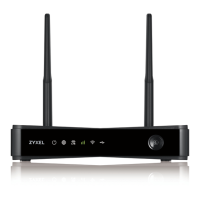
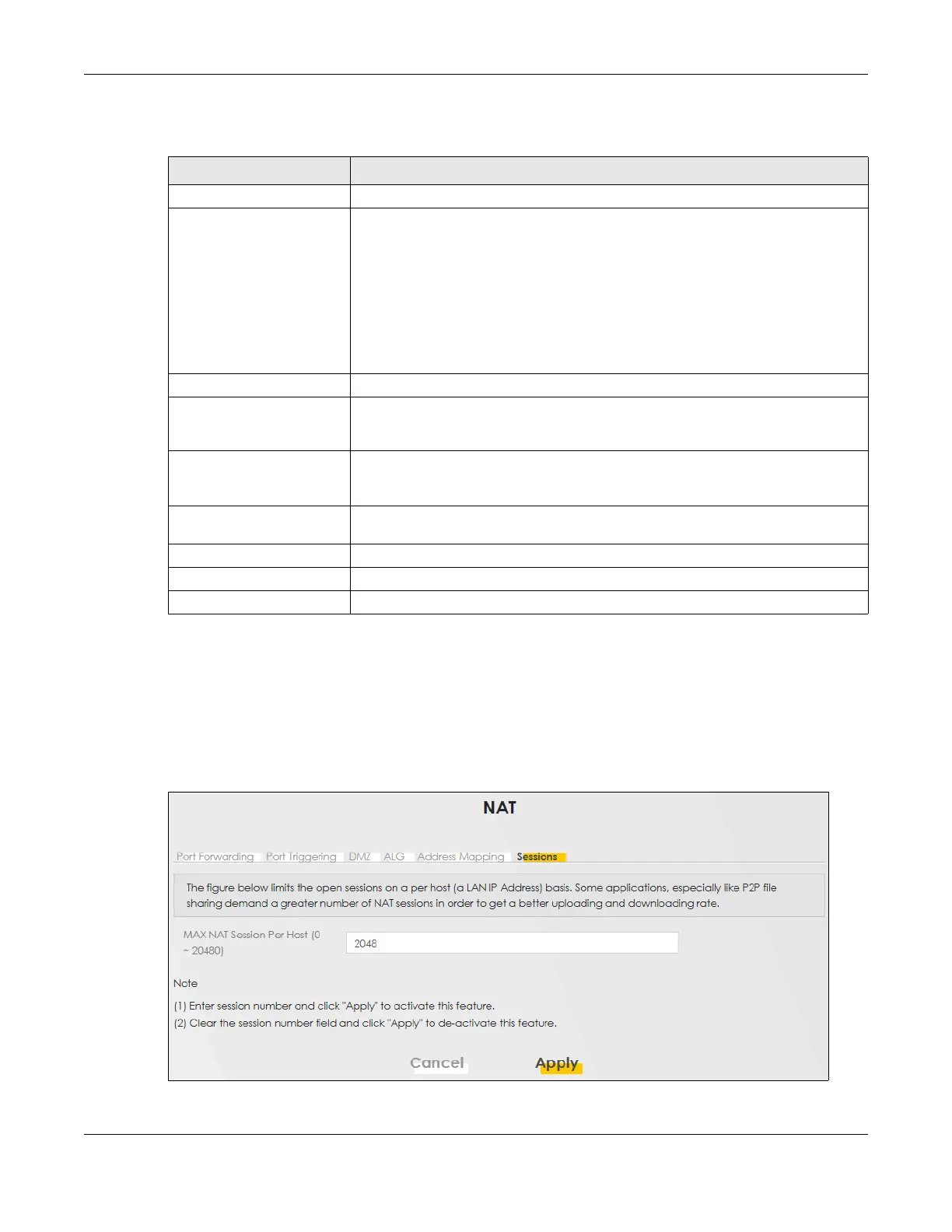